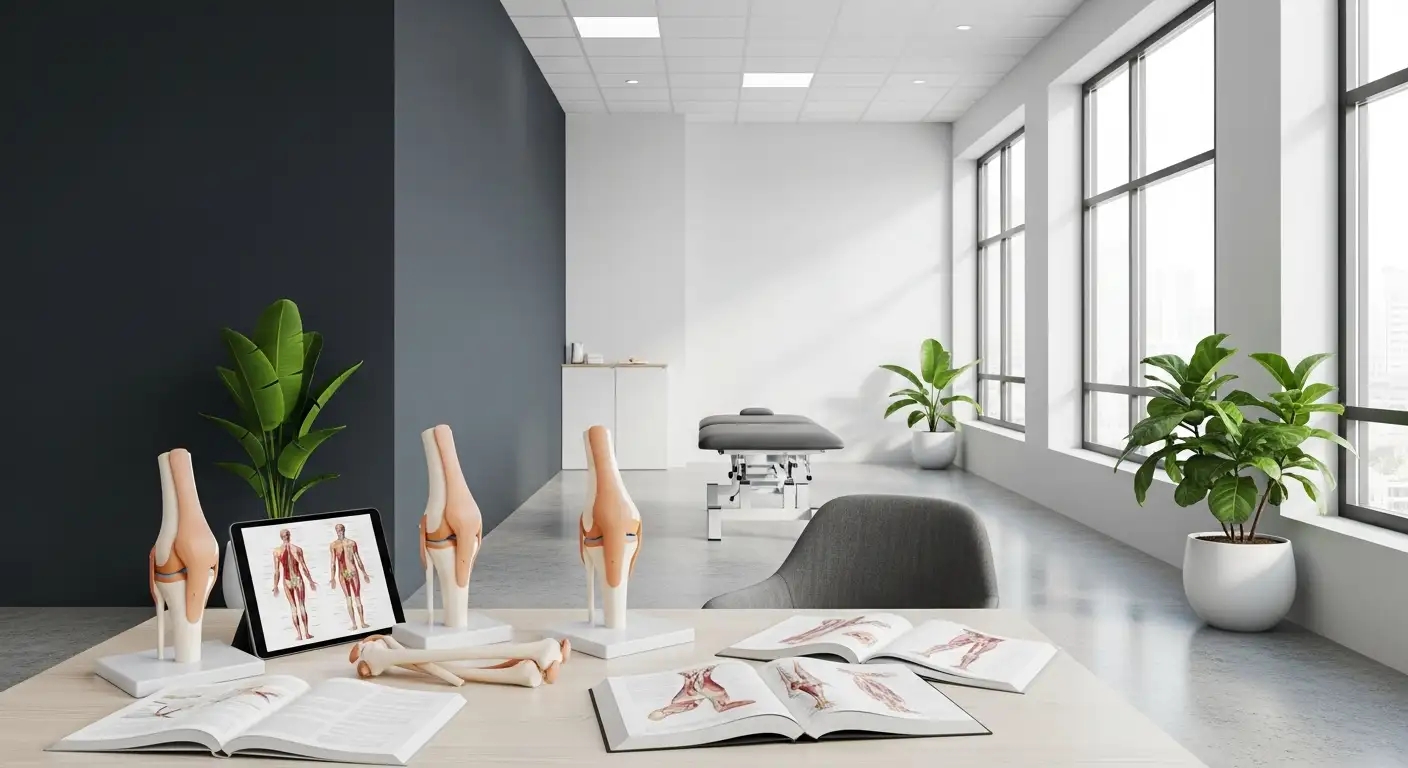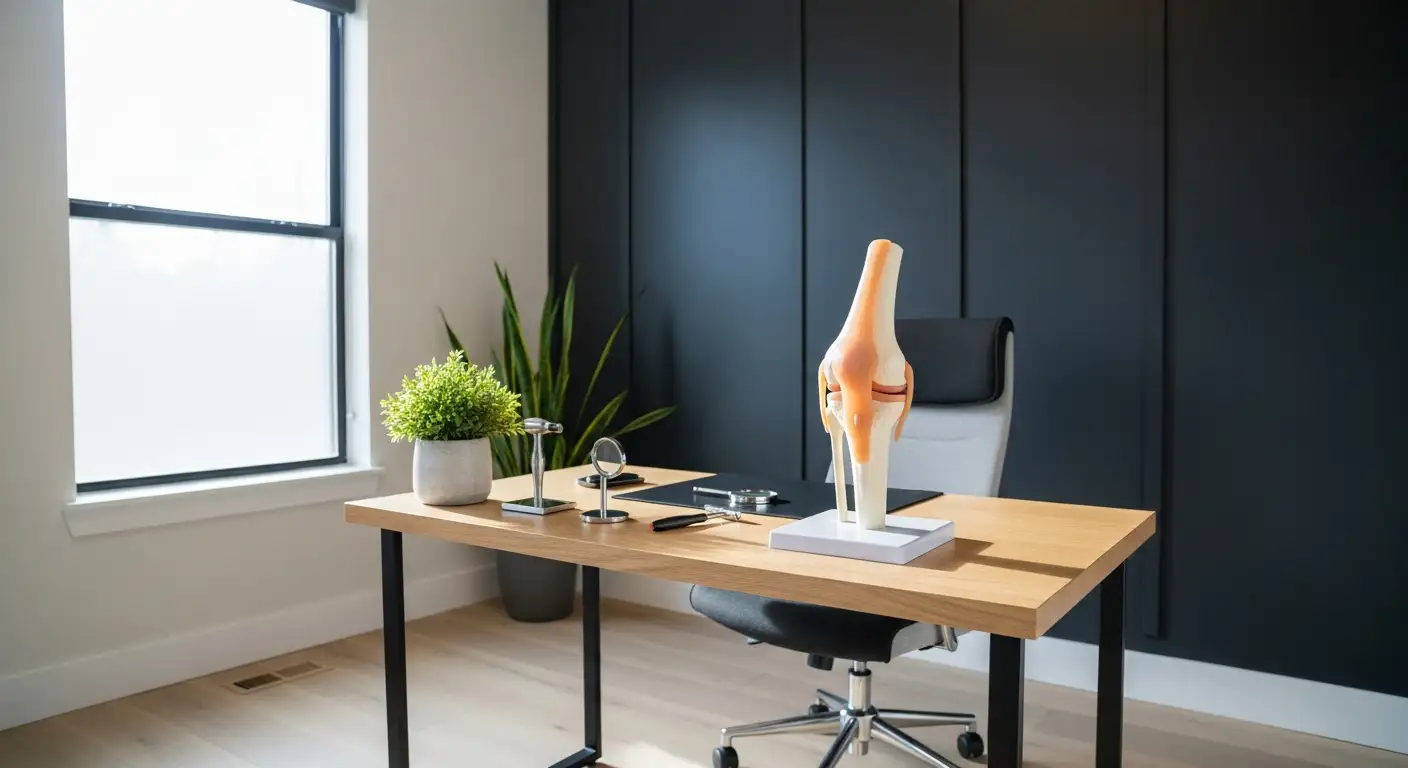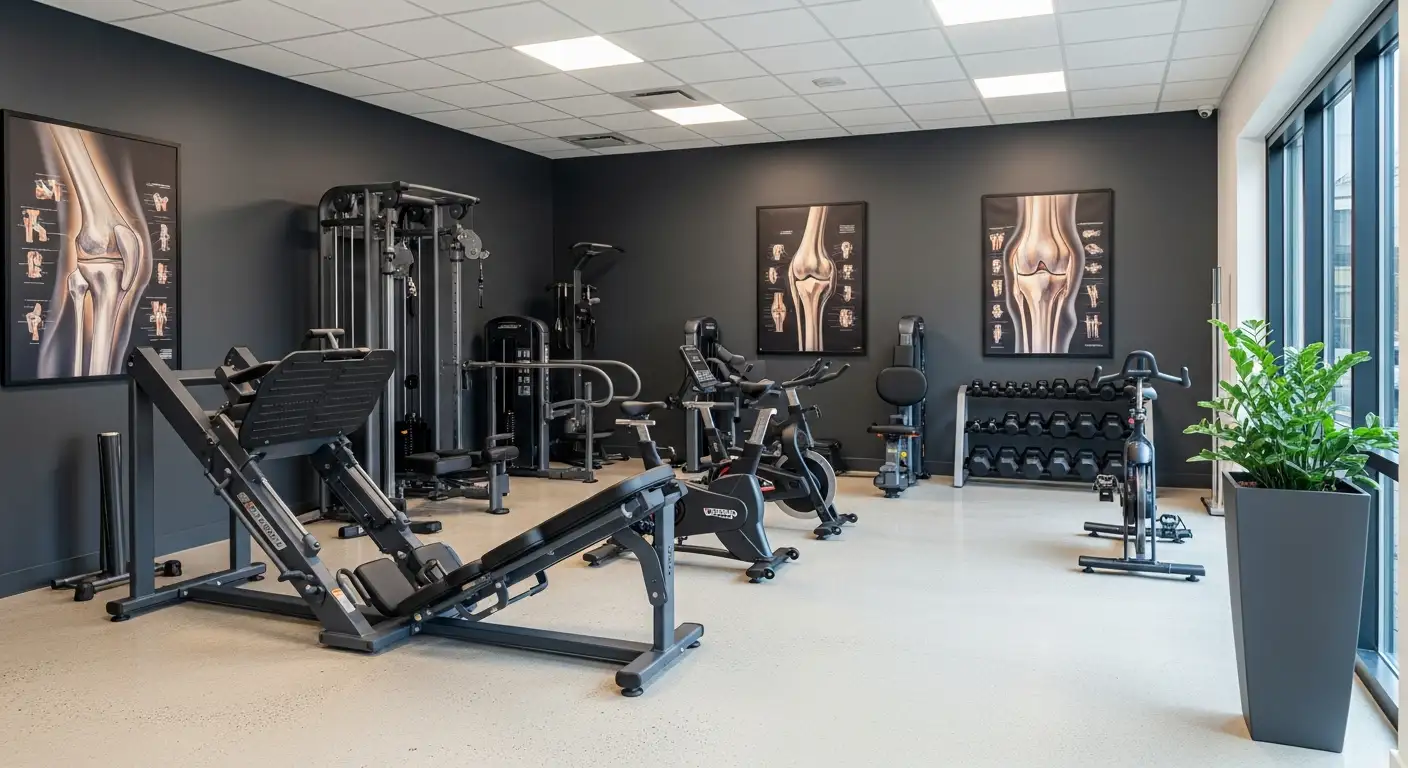Understanding Hip and Knee Pain
Discovering the causes of simultaneous hip and knee pain is essential for effective treatment and management. Pain in these areas can significantly impact a person's daily life, making it difficult to perform even simple tasks.
Causes of Hip and Knee Pain
A wide variety of conditions may cause an individual to experience hip and knee pain together. One common cause is osteoarthritis, a degenerative joint disease that affects various areas, including the hips, hands, and knees. Symptoms often include pain in the groin area, buttocks, or the inside of the knee or thigh.

In addition, sciatica, which originates from the sciatic nerve extending from the lower back to below the knee, can result in pain affecting areas along the nerve pathway. Symptoms include shooting pain, burning or tingling down the leg, or weakness, numbness, or difficulty moving the leg or foot.
Furthermore, injuries to the hip and knee, whether acute or chronic, can lead to pain and tenderness. Symptoms vary based on the cause, with pain during activity or swelling and aching during rest being common indicators.
Finally, having flat feet, or pes planus, a common condition, can put strain on a person's hips and knees, leading to symptoms such as pain, swelling, or stiffness in the feet, legs, or lower back.
Impact of Hip and Knee Pain on Daily Life
Experiencing hip and knee pain simultaneously can significantly interfere with a person's everyday life. Simple tasks such as walking, climbing stairs, or even sitting can become challenging and uncomfortable. This can lead to a decrease in physical activity, which in turn can contribute to other health problems such as weight gain and decreased cardiovascular health.
In addition, persistent pain in the hip and knee can affect a person's sleep quality, leading to fatigue and decreased mental well-being. It can also lead to a decrease in social activities, contributing to feelings of isolation and depression.
Addressing the causes of hip and knee pain and seeking appropriate treatment can greatly improve an individual's quality of life. Treatments may include physical therapy, medication, lifestyle changes, or in some cases, surgery. Understanding the causes and effects of hip and knee pain is the first step towards managing this condition and regaining a pain-free life.
Common Conditions Leading to Pain
Several conditions can be at the root of simultaneous hip and knee pain. Understanding these conditions can be beneficial in finding the root cause and effectively managing the discomfort. The three common conditions that we will delve into are osteoarthritis, sciatica, and injuries.
Osteoarthritis and its Effects
Osteoarthritis is a prevalent condition that often leads to hip and knee pain. It is a degenerative joint disease that primarily affects the cartilage in the joints, most commonly in the hips, hands, and knees. The wearing down of cartilage leads to bone-on-bone contact, which can cause pain, swelling, and reduced mobility. This is a common reason behind what causes hip pain and knee pain at the same time.
The pain associated with osteoarthritis is generally characterized by aching, stiffness, and difficulty moving the affected joint. It can vary in intensity and may worsen with activity. Managing osteoarthritis often involves a combination of medication, lifestyle changes, and physical therapy.
Sciatica and its Relationship to Pain
Another condition that can lead to concurrent hip and knee pain is sciatica. This condition results from an issue with the sciatic nerve, which extends from the lower back, through the hips, and down each leg. Sciatica typically affects only one side of the body and can cause pain and discomfort extending from the lower back to below the knee.
Sciatica pain is often described as sharp, shooting, or burning. It may be accompanied by numbness or tingling in the affected leg. Treatment for sciatica can include physical therapy, medication, and in some severe cases, surgery.
Injuries as a Source of Discomfort
Injuries to the hip and knee, whether acute or chronic, can also be a source of concurrent pain. These injuries can result from sports, falls, or overuse, and may lead to symptoms such as pain during activity, swelling, and aching.
Injuries can range from mild, such as sprains and strains, to severe, such as fractures or dislocations. The severity and type of injury will determine the treatment plan, which can include rest, physical therapy, or surgery.
In addition, certain physical conditions, such as having flat feet or pes planus, can put strain on a person's hips and knees, leading to symptoms such as pain or discomfort.
Understanding these common conditions can help individuals identify potential causes of their hip and knee pain. It is important to consult with a healthcare professional for an accurate diagnosis and appropriate treatment plan.
Factors Influencing Hip and Knee Pain
Understanding what causes hip pain and knee pain at the same time can be complex. Several factors can influence these conditions, including obesity, hip alignment, and posture.
The Role of Obesity
Obesity significantly contributes to the development and exacerbation of hip and knee pain. It is the greatest modifiable risk factor for osteoarthritis (OA), and individuals with a BMI>30 kg/m2 are 6.8 times more likely to develop knee OA than normal-weight controls. Furthermore, there is a dose-dependent relationship between body mass index (BMI) and the risk of developing OA at both the knee and the hip. A 5-unit increase in BMI associates with a 35% increased risk of knee OA and an 11% increased risk of hip OA.
Obesity also increases the risk of joint replacements, with 69% of knee replacements and 27% of hip replacements attributable to overweight and obesity [2]. Moreover, severe obesity poses a significant risk factor for slow recovery and worse pain and functional recovery at six months following total hip and knee arthroplasty.
Conversely, weight loss in obese subjects with knee OA can improve pain, delay joint structural damage, and provide symptomatic relief independently of joint damage severity.
Importance of Hip Alignment
Hip alignment plays a crucial role in managing hip and knee pain. Misaligned hips can cause imbalances in your spine, leading to chronic back pain. Conversely, unresolved back pain can contribute to hip issues. Therefore, addressing both hip and posture concerns is crucial for lasting relief.
Your hips provide the support your spine needs for proper alignment. When your hips are misaligned or compromised, it can lead to a domino effect of poor posture.
Link Between Posture and Pain
The alignment of the body, particularly the posture, can influence hip and knee pain. Slouching or adopting poor posture habits can cause your pelvis to tilt forward or backward, placing undue stress on your hip joints. Over time, this can result in hip pain, reduced mobility, and even hip conditions like osteoarthritis [3].
The connection between hip and back pain is well-documented. Misaligned hips can cause imbalances in your spine, leading to chronic back pain. Conversely, unresolved back pain can contribute to hip issues.
Understanding the factors influencing hip and knee pain is critical in managing these conditions effectively. Addressing issues like obesity, hip alignment and poor posture can significantly improve pain management strategies and enhance overall quality of life.
Addressing Hip and Knee Pain
Finding the right treatment plan for joint pain can greatly relieve the discomfort and improve daily life. Let's delve into some common causes of hip and knee pain and their corresponding treatments.
Treatment Options for Osteoarthritis
Osteoarthritis (OA) is a degenerative condition that affects the joints and can cause pain in both the hip and knee. The weight-bearing role of hips and knees makes them particularly susceptible to OA, as they must handle most of the stress from walking and other activities.
Treatments for OA can vary depending on the severity, but typically include:
- Pain management: Over-the-counter pain relievers and anti-inflammatory drugs can help manage pain and reduce inflammation. If these don’t provide relief, your doctor may recommend prescription medications.
- Physical therapy: A physical therapist can guide you through exercises that strengthen muscles around the affected joint, improving flexibility and reducing pain.
- Lifestyle modifications: Weight loss, if needed, can significantly reduce pressure on weight-bearing joints like the hip and knee. Regular, low-impact exercise, like swimming or cycling, can also help.
- Surgery: In severe cases, joint replacement surgery may be necessary.
Managing Tendonitis Pain
Tendonitis can cause both hip and knee pain. When tendonitis affects the hip joint, it can lead to referred pain in the knee joint, and vice versa when it affects the knee joint [4].
Treatment for tendonitis usually involves:
- Rest: Giving the affected joint enough time to heal is crucial. You may need to avoid activities that exacerbate the pain.
- Ice and heat: Applying ice to the affected area can help reduce swelling, while heat can help relieve pain and promote blood flow.
- Physical therapy: Specific exercises can help strengthen the affected muscle-tendon unit, reducing pain and preventing future injury.
- Medication: Non-prescription pain relievers and anti-inflammatory drugs can help manage pain and inflammation.
Correcting Hip Alignment and Posture
Poor posture habits can cause your pelvis to tilt forward or backward, placing undue stress on your hip joints. Over time, this can result in hip pain, reduced mobility, and even hip conditions like osteoarthritis [3].
Correcting alignment and posture involves:
- Posture training: This can involve exercises that strengthen your core, improve flexibility, and correct any imbalance in your muscles.
- Ergonomics: Make sure your work environment is set up to support good posture. This includes having a chair with good back support and keeping your computer monitor at eye level.
- Regular breaks: If you sit for long periods, take frequent breaks to stretch and move around.
- Physical therapy: A physical therapist can provide personalized exercises and strategies to improve your posture and alignment.
It's important to address hip and knee pain early to prevent long-term damage and improve quality of life. If you're experiencing joint pain, consult with a healthcare professional to discuss your symptoms and explore suitable treatment options.
Strengthening for Pain Relief
In addressing what causes hip pain and knee pain at the same time, attention must be given to the role of muscle strength, specifically the gluteus medius. Additionally, hip and core strengthening exercises, as well as physical therapy, can provide significant relief.
Importance of Gluteus Medius Strength
The gluteus medius, one of the key muscles in the hip region, plays a significant role in maintaining proper alignment and function of the lower limb. Weakness of the gluteus medius muscle has been shown to contribute to many common running injuries, including iliotibial band syndrome, patellofemoral pain, and shin splints [5].
This weakness can also lead to the formation of trigger points or muscle knots in the leg muscles, which can intensify pain. One way to identify a weak gluteus medius is by attempting a single-leg squat. If your hip drops or your knee rotates inward, this could indicate gluteus medius weakness.
Hip and Core Strengthening Exercises
To alleviate hip and knee pain, it's essential to focus on strengthening the gluteus medius and other hip muscles through a targeted hip and core strengthening program. Such a program can help treat or prevent hip, knee, and other lower extremity injuries.
Examples of these exercises could include:
- Single-leg squats
- Hip abductions
- Clamshells
- Glute bridges
- Planks
Remember that it's essential to maintain proper form when performing these exercises to maximize their effectiveness and avoid injury.
Physical Therapy Benefits
Physical therapists can assess hip mobility and strength to determine if the gluteus medius muscle is weak and potentially causing knee pain. They can provide valuable guidance and design a personalized strengthening program that targets the hips and core. Strengthening these areas can help alleviate stress on the knees, providing relief from pain.
In addition, physical therapists can provide manual therapy, including techniques like massage and mobilization, to address muscle knots or trigger points that might be contributing to pain. They can also instruct patients on proper exercise form and provide advice on modifying activities to prevent further pain.
In conclusion, while hip and knee pain can seriously impact one's quality of life, strengthening exercises focusing on the hips and core, along with physical therapy, can offer significant relief. It's crucial to consult with a healthcare professional or physical therapist to receive a personalized treatment plan.
Prevention and Lifestyle Changes
To manage and avoid the simultaneous occurrence of hip and knee pain, it's important to focus on early detection, lifestyle modifications, and long-term strategies for joint health.
Early Detection and Intervention
Early detection and intervention play a critical role in managing what causes hip pain and knee pain at the same time. Conditions such as osteoarthritis and flat feet, which can cause simultaneous hip and knee pain, can significantly interfere with everyday life. Regular check-ups and prompt attention to any joint discomfort can help to identify potential issues early and initiate appropriate treatment measures.
Lifestyle Modifications for Pain Relief
Modifying one's lifestyle is an effective way to manage and prevent joint pain. For instance, maintaining a healthy weight can minimize the stress on weight-bearing joints like the hips and knees, reducing the risk of osteoarthritis.
Improving posture is another crucial lifestyle modification. Slouching or adopting poor posture habits can cause the pelvis to tilt forward or backward, placing undue stress on the hip joints, which over time can result in hip pain, reduced mobility, and conditions like osteoarthritis.
Long-Term Strategies for Joint Health
For long-term joint health, individuals should consider strategies that focus on improving alignment and strength, particularly in the hip region. The hips provide the support the spine needs for proper alignment, and when the hips are misaligned or compromised, it can lead to a domino effect of poor posture.
Engaging in regular physical activity, particularly exercises that strengthen the hip and core muscles, can help to maintain proper hip alignment and promote overall joint health. Additionally, incorporating flexibility exercises into one's routine can also help to improve joint mobility and reduce the risk of pain and injury.
Incorporating these preventative measures and lifestyle changes can make a significant difference in managing hip and knee pain. However, it's important to remember that individual results may vary, and what works for one person may not work for another. Therefore, it's advisable to consult with a healthcare professional or physical therapist to develop a personalized plan that meets one's specific needs and circumstances.
References
[1]: https://www.medicalnewstoday.com/articles/hip-and-knee-pain
[2]: https://www.ncbi.nlm.nih.gov/pmc/articles/PMC3788203/
[3]: https://www.drkeithnelsonortho.com/the-connection-between-hip-health-and-posture-tips-for-improvement/
[4]: https://www.jeffortho.com/blog/hip-and-knee-pain-are-they-related
[5]: https://totalperformancept.com/your-knee-pain-can-be-coming-from-your-hips/





